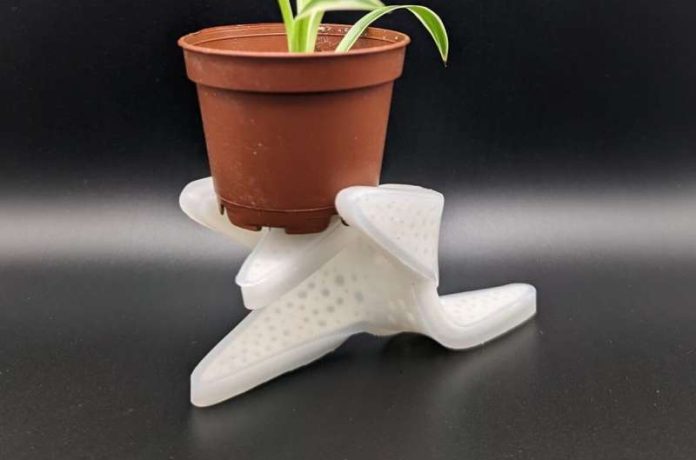
Researchers have developed a flexible yet sturdy material that can change shape, inspired by the starfish’s skeleton.
This new material, which shows 4D morphing features, could be used in robotics, aviation, and medical devices.
“Starfish can hold themselves in any position by changing the stiffness of their skeleton,” explains Raman Raman, a Ph.D. student at Hochschule Bremen—City University of Applied Sciences in Germany.
“We were fascinated by this biological solution to a complex engineering problem. Our goal was to understand their skeleton and create a new material with similar properties.”
Starfish have calcite microstructures called ossicles inside their bodies, which are connected by collagen fibers to form their skeleton.
This strong yet simple structure allows them to hold various positions with minimal energy use.
Raman and his team used high-resolution X-ray CT scans to visualize the starfish’s skeleton and employed mathematical models to understand the mechanics of the skeleton’s components. “For the first time, we can show the complex 3D structure of the starfish skeleton and the fine ultrastructure of the small ossicles,” says Raman.
“We used these insights to design our own morphing structure, using rapid prototyping techniques for fabrication.”
The team used 3D printing to create different working prototypes that can handle a wide range of physical challenges. “Our starfish-inspired morphing structure shows self-locking, continuous bending, self-healing, and shape memory features,” Raman explains.
The new material is scalable, low-cost, and relatively easy to manufacture, offering many opportunities for industrial applications. It could be used in robotics, where flexible and adaptable materials are needed. In aviation, the material could be used to create morphing wings or other structures that change shape for better performance.
In the medical field, the material could be used to create prosthetics and implants that adapt to the body.
This exciting research is being presented at the Society for Experimental Biology Annual Conference in Prague from July 2-5, 2024. By studying the starfish’s skeleton, scientists have developed a new material with incredible shape-shifting abilities, promising to revolutionize various industries.
Source: Society for Experimental Biology.



